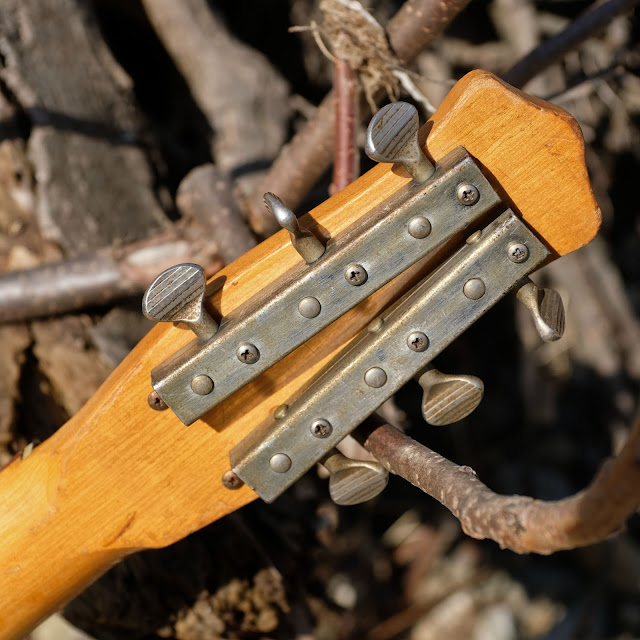1960s Danelectro Convertible Hollowbody Electric Guitar
While Danelectro's intent was to make an electric guitar that doubles as an acoustic guitar, it really just doubles as an acoustic guitar "in a pinch." It sounds good enough to work on material while hanging-out on the couch or maybe at the beach, but I would be hard-pressed to use one of these while jamming with a buddy acoustically.
What it does perfectly is something you don't quite get from other Danelectros -- it offers a fully-hollow construction and the lovely lipstick-pickup sound near the neck position -- giving you tonal options from Dano-style chime to an almost late-'40s electric jazz tone depending on where you pick it and what you put it through. It also, obviously, looks awesome.
I worked on this for a customer and it received new grounding at the tailpiece, a fret level/dress, compensation and modification to the original bridge for better tone and ease-of-use, much cleaning, and a good setup. The neck is straight and it plays with 3/32" E and 1/16" ADGBE action at the 12th fret -- right on the mark. I've used gauges 46w, 36w, 26w, 18w, 13, 10 -- regular "10s" but with a wound G string as plain Gs tend to sound lacking when in "acoustic" mode.
The faux-grain veneer on the masonite body is hilarious but effective. This guitar is 100% original except for my alterations to the bridge. These bodies are 13 1/8" across the lower bout and 1 7/8" deep.
The nut is 1 5/8" and the 25" scale sits closer to Gibson territory as opposed to Fender. The neck is poplar with a rosewood fretboard -- the latter bit a nice upgrade for a budget guitar compared to the stained maple found on most Harmony and many Kay products.
That rosewood was filthy, though. I had to scrub it with a ton of #0000 steel wool and naptha solvent.
As usual, the pickup's "lipstick case" covering is splitting at the seam a bit.
My bridge modifications were simple -- I compensated the fret saddle to get the B string in tune and then added set-in-body thumbwheel adjusters for height adjustment.
These bridges have three original "feet" which are really just adjustable threaded bits that make contact with the top. I removed the two on the front edge and allowed the thumbwheel-adjusters to set in the threaded sockets. This makes better contact with the body for improved tone and also locks the bridge in place so it doesn't slide around on the top (was per the normal situation with these).
The last original adjuster is left in place and once height is dialed-in via the thumbwheels, can be snugged-up to the top for even better body contact.
The controls are simple volume/tone.
I can't argue with the down-home looks of those "skate key" tuners.
There were some critters down by the river again.


















Comments